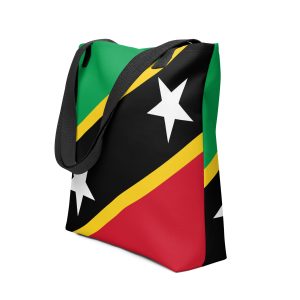1983 Independence of St. Kitts and Nevis
On September 19, 1983, St. Kitts and Nevis achieved full independence from the United Kingdom, marking a turning point in the islands’ history. The transition to a sovereign state gave the nation control over both internal and external affairs, making it the smallest independent country in the Western Hemisphere. Dr. Sir Kennedy Alphonse Simmonds, leader of the People’s Action Movement (PAM), became the first Prime Minister, leading the country through this historic transformation.
Background to Independence
The path to independence for St. Kitts and Nevis was shaped by political reforms in the 1950s and 1960s. The introduction of Universal Adult Suffrage in 1952 and Associated Statehood in 1967 laid the foundation for self-governance, allowing the islands to manage their internal affairs while Britain controlled defense and foreign relations .
Key figures like Robert Llewellyn Bradshaw, the first Premier, played a central role in the push for autonomy. After Bradshaw’s death in 1978, Sir Kennedy Simmonds took up the leadership mantle, guiding the islands toward full independence .
The Road to Independence
In the late 1970s and early 1980s, the momentum for independence grew, driven by the desire for full sovereignty and the ability to determine the islands’ future without external influence. Negotiations between St. Kitts and Nevis and the British government led to the Independence Agreement of 1983. Under this agreement, St. Kitts and Nevis remained part of the Commonwealth of Nations, with Queen Elizabeth II as the ceremonial head of state, represented by a Governor-General. However, the islands gained full control over their political, economic, and legal systems .
The Structure of the New Nation
The newly independent nation adopted a federal structure to address the long-standing concerns of Nevis, which had feared political and economic domination by St. Kitts. The Constitution of St. Kitts and Nevis granted Nevis significant autonomy, including its own island administration and the right to secede under certain conditions. This federal arrangement helped to ease tensions, though the issue of Nevisian secession would remain a recurring topic in the political landscape .
Independence also saw the establishment of national institutions, including a parliament, judiciary, and security forces. New national symbols, such as the flag and anthem, were introduced to represent the islands’ sovereignty .
Dr. Sir Kennedy Simmonds: First Prime Minister
As the first Prime Minister of an independent St. Kitts and Nevis, Dr. Sir Kennedy Alphonse Simmonds played a crucial role in stabilizing the new nation. His government focused on economic diversification, moving away from the declining sugar industry and promoting tourism and other sectors. Under his leadership, St. Kitts and Nevis began to forge diplomatic and trade relationships with other countries, building its reputation as a stable and emerging nation .
Challenges and Opportunities
Independence brought both opportunities and challenges. The collapse of the sugar industry, once the backbone of the economy, forced the government to diversify into tourism and financial services . Additionally, managing the federation’s internal dynamics, particularly the tensions between St. Kitts and Nevis, required careful governance to maintain unity and equitable resource distribution.
Despite these challenges, independence allowed St. Kitts and Nevis to shape its own future. Over time, the nation has developed a reputation for political stability, resilience, and a growing tourism industry .
Legacy of Independence
The 1983 independence of St. Kitts and Nevis was a defining moment in the nation’s history, marking the end of colonial rule and the beginning of self-determination. September 19 is celebrated annually as Independence Day, with festivities across both islands honoring the journey to sovereignty.
The legacy of independence continues to shape the islands’ democratic institutions, and the federal structure remains a vital part of the nation’s political framework. The country’s progress since 1983 reflects its ability to manage internal differences and build a diversified economy .
Conclusion
The independence of St. Kitts and Nevis in 1983 was the culmination of decades of struggle for self-governance. Under Sir Kennedy Simmonds’ leadership, the country embarked on a path of self-reliance and progress. Today, the independence era is remembered as a period of national pride and achievement, marking St. Kitts and Nevis as a sovereign nation that continues to thrive on the global stage.
Historical Overview of St. Kitts and Nevis
Colonial History
Significant Historical Events
Pre-Columbian Era
European Exploration and Colonization
- 1493 – Christopher Columbus’s Second Voyage
- 1623 – Establishment of the First European Settlement
- 1626 – Kalinago Massacre
Colonial Era
- 1650s – Expansion of Sugar Plantations
- 1666 – French Occupation of St. Kitts
- 1706 – Nevis Raid
- 1783 – Treaty of Paris
20th Century Developments
- 1932 – Founding of the St. Kitts Workers’ League
- 1952 – Universal Adult Suffrage
- 1967 – Associated Statehood
- 1978 – Death of Sir Robert Llewellyn Bradshaw
Independence and Modern Developments
- 1983 – Independence
- 1998 – Nevis Secession Referendum
- 2005 – Hurricane Impact
- 2015 – Team Unity Government
Disclaimer
The information provided on stkittsnevisflag.com is for general informational purposes only. While we strive to provide accurate and up-to-date information, we make no warranties or representations of any kind, express or implied, about the completeness, accuracy, reliability, suitability, or availability of the information contained on this website. Any reliance you place on such information is therefore strictly at your own risk.
stkittsnevisflag.com will not be liable for any loss or damage, including without limitation, indirect or consequential loss or damage, or any loss or damage whatsoever arising from loss of data or profits arising out of, or in connection with, the use of this website.
We encourage all users to verify any information found on this site before relying on it. If you find any incorrect or outdated information, please contact us at info@stkittsflag.com so we can make the necessary corrections.




